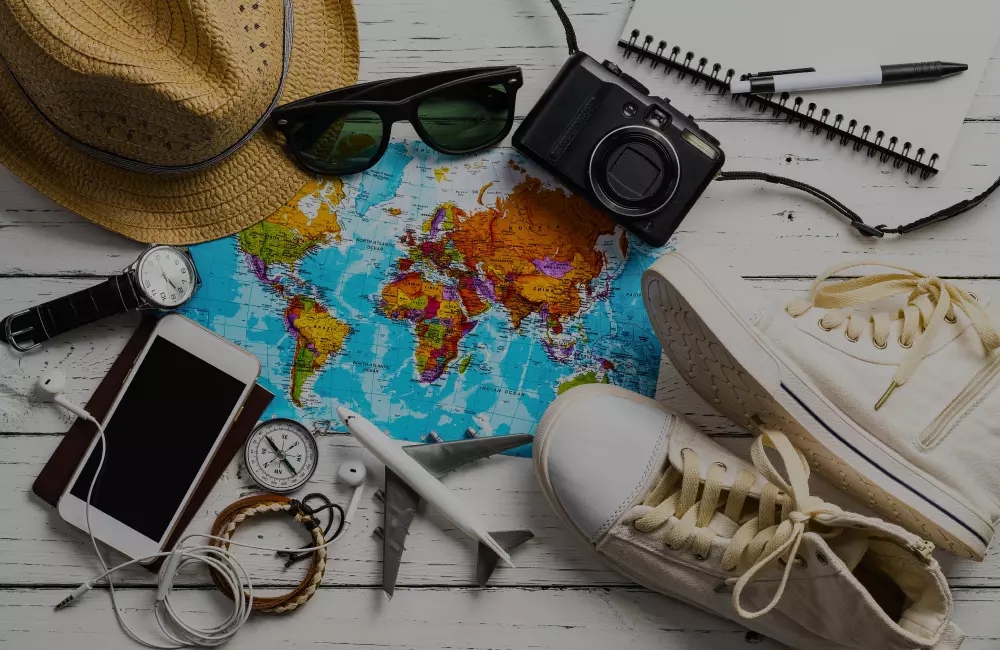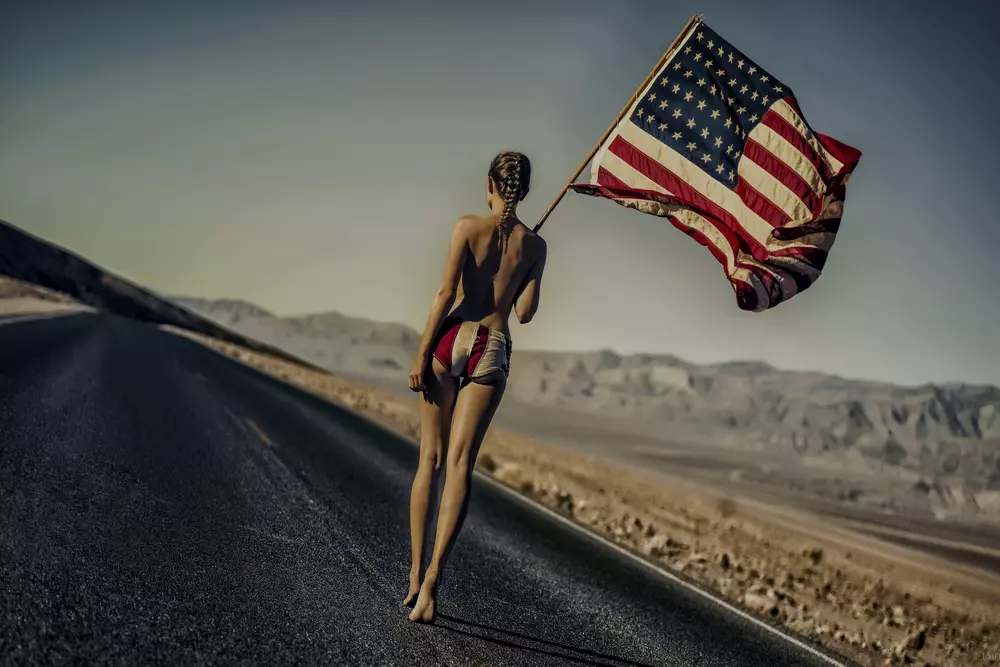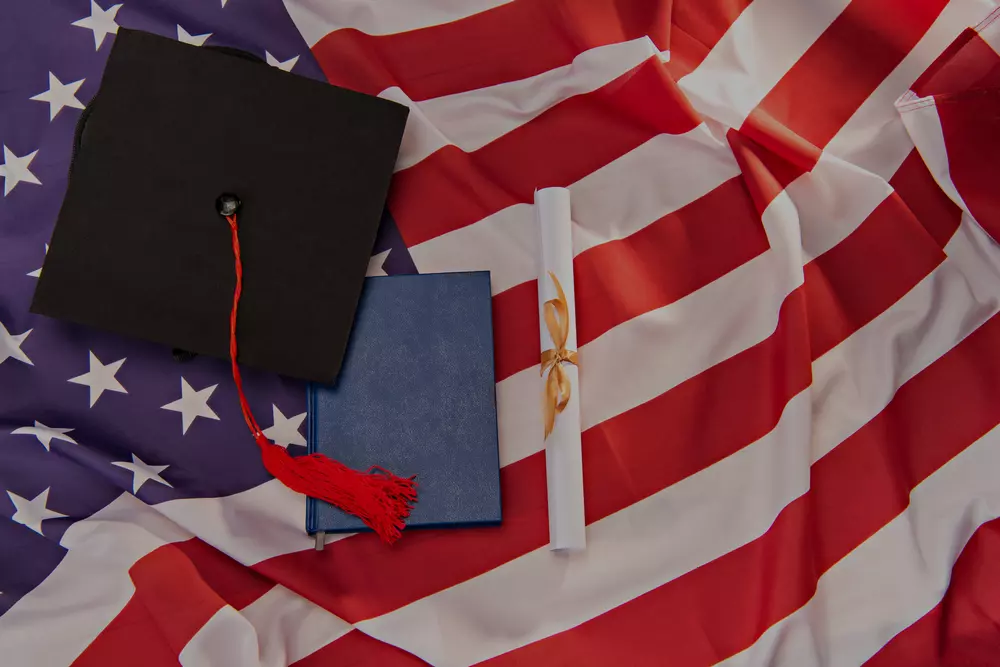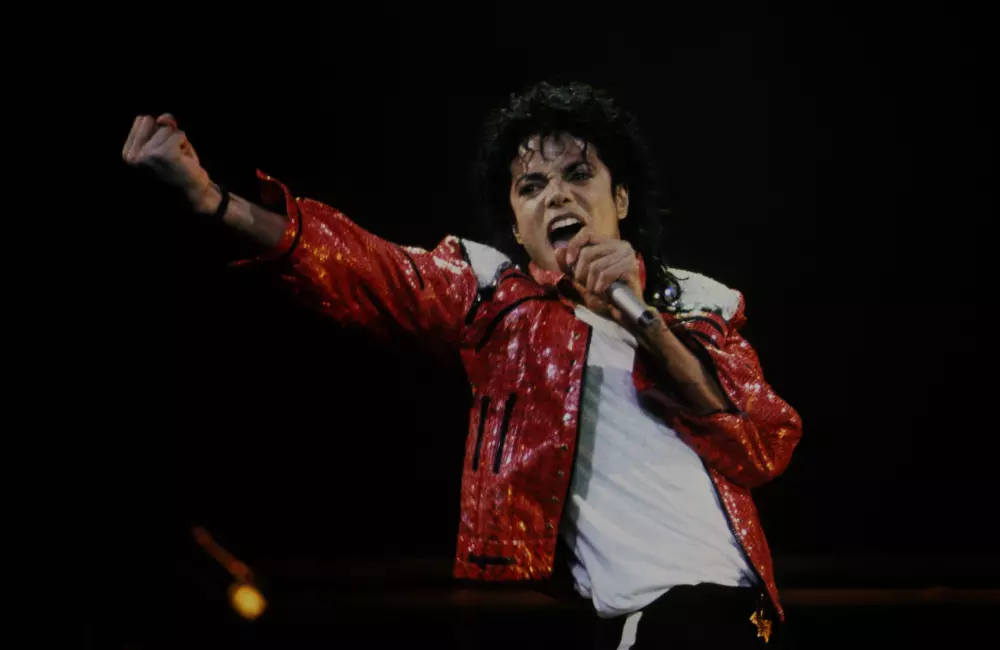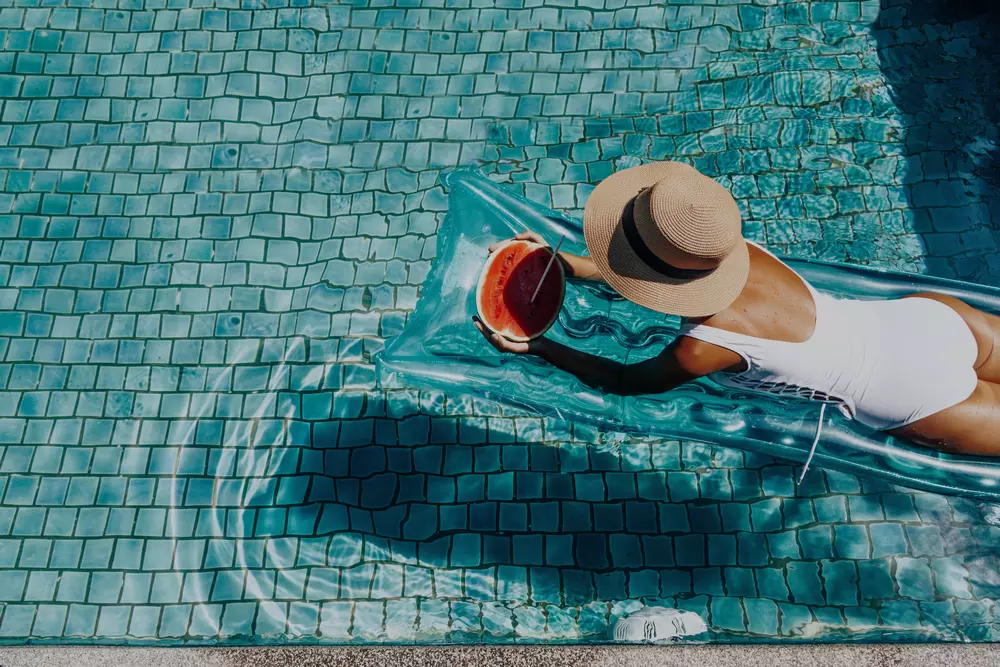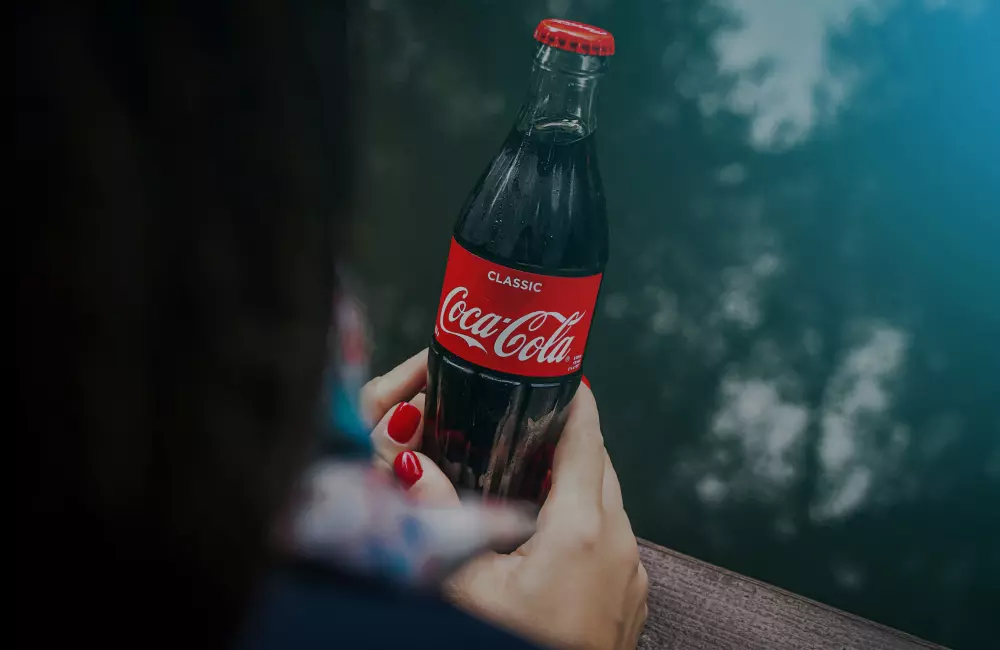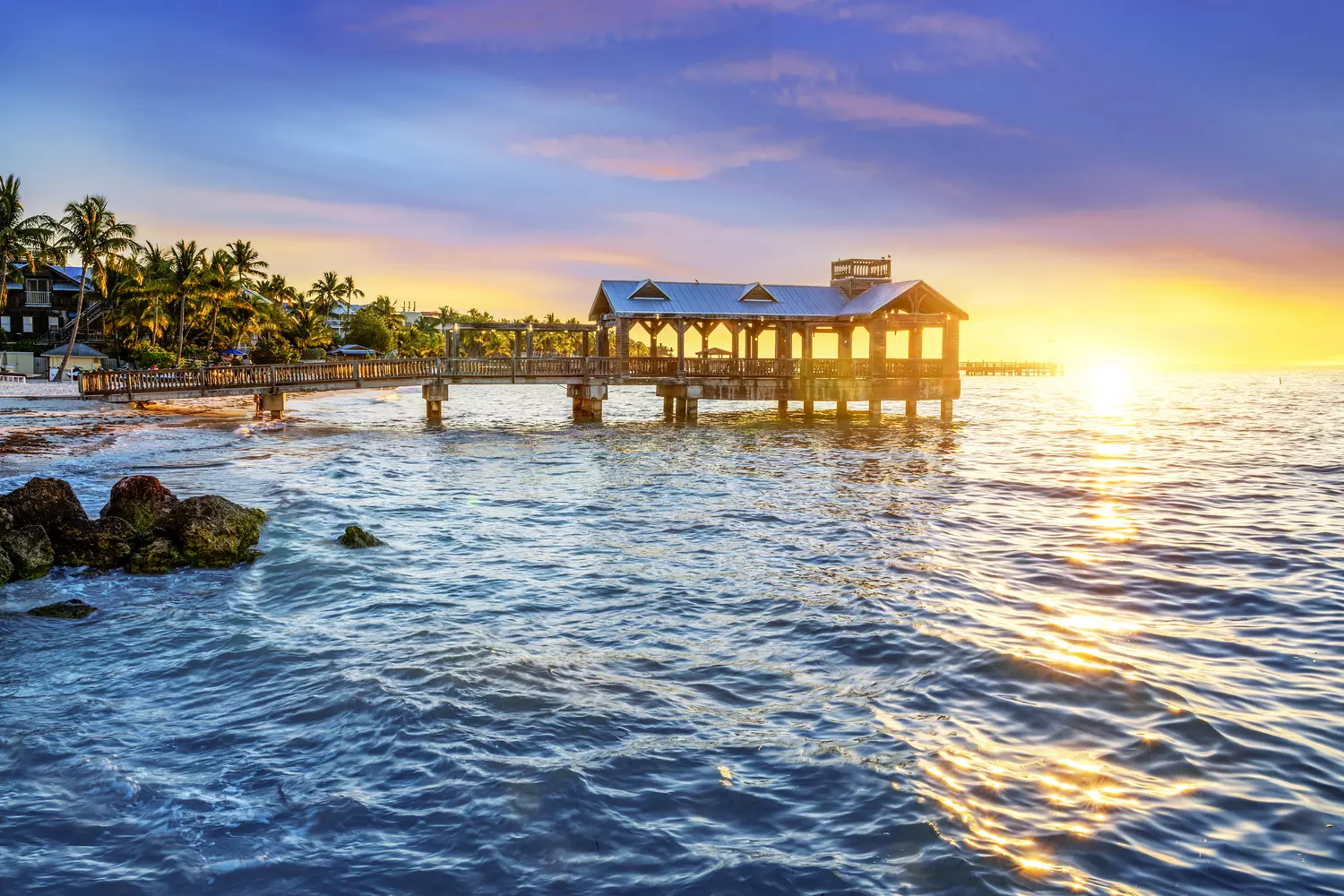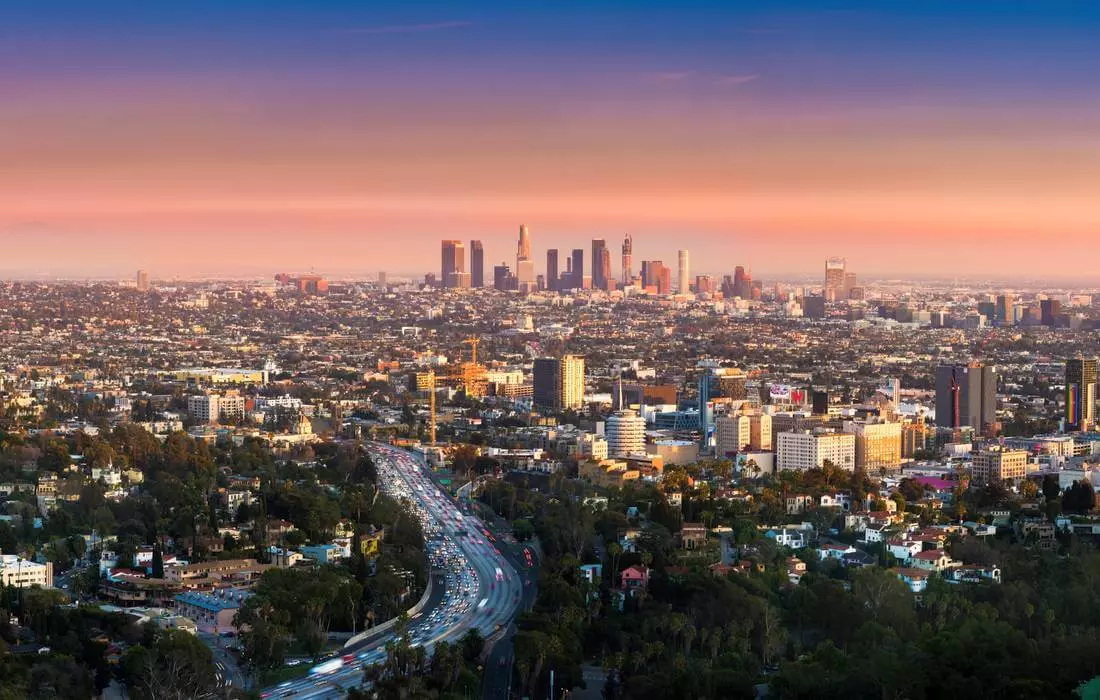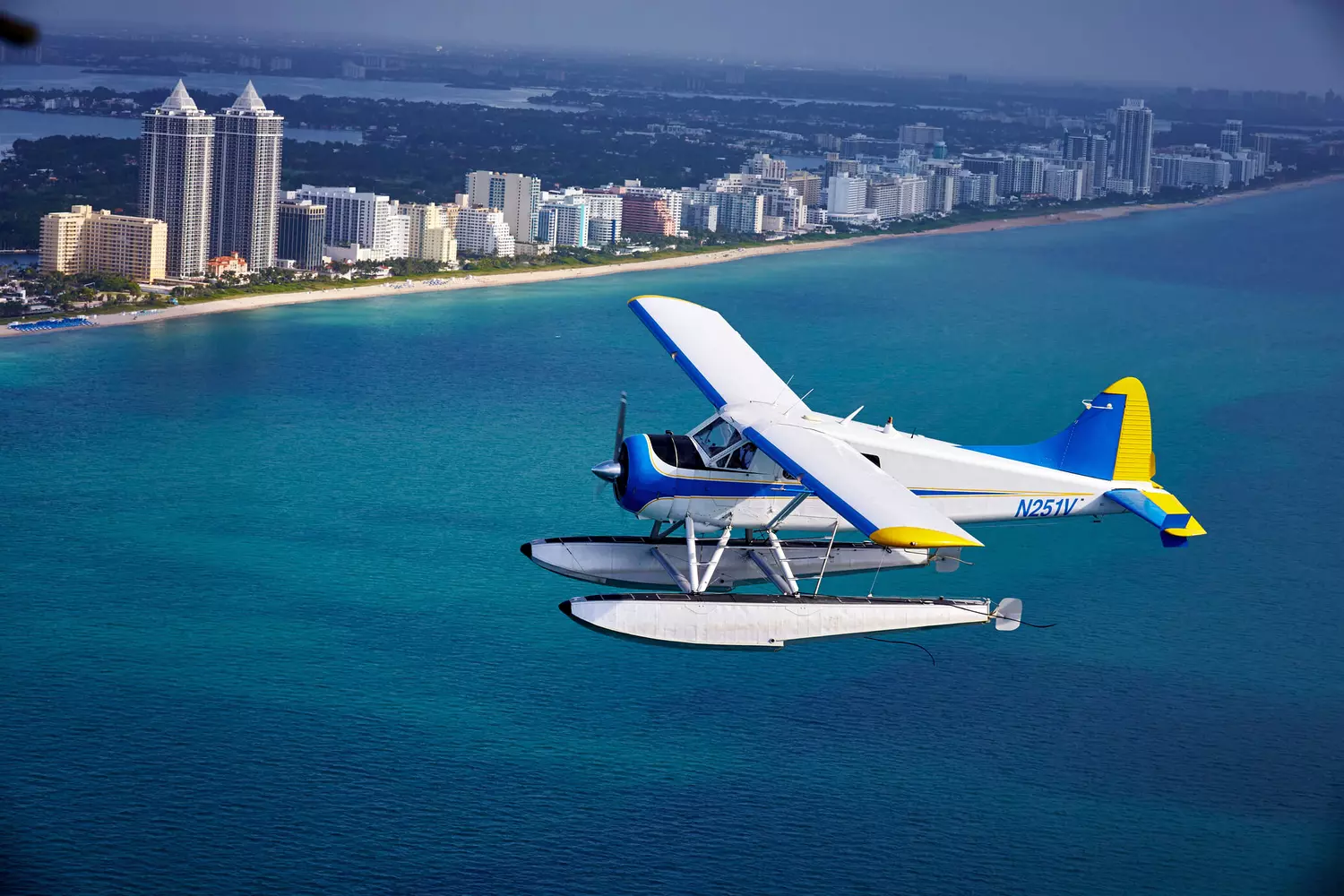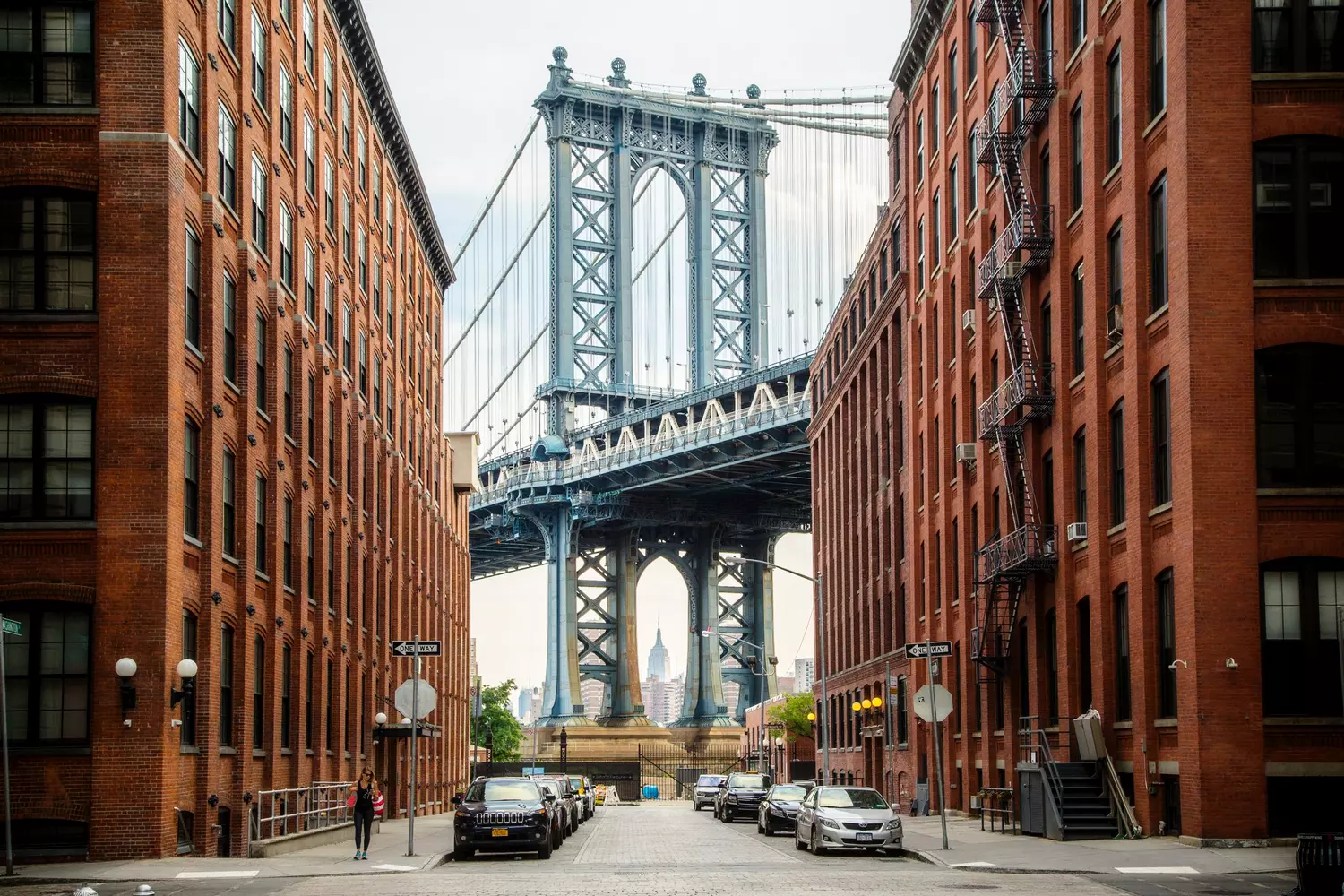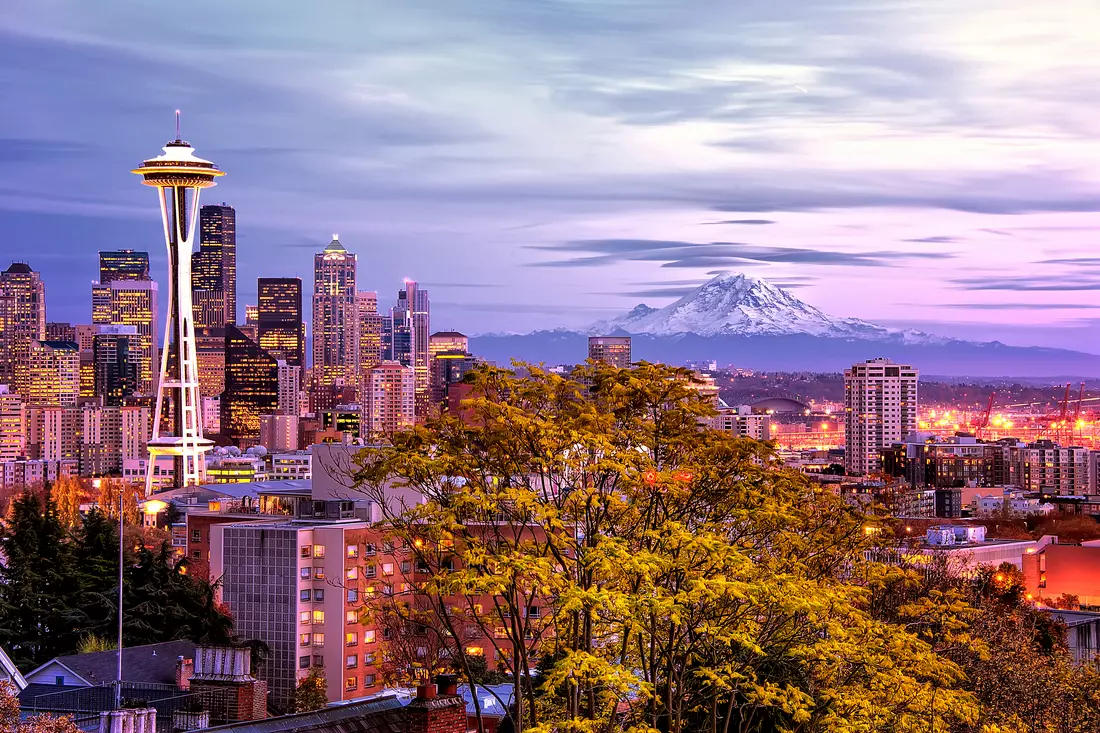When people say "Texas," the imagination conjures cowboys, barbecue, and endless plains. But in reality, it’s so much more. Texas is a cultural cocktail — a mix of Mexico and America, retro and high-tech, deserts and ultra-modern cities. It’s freedom, flavor, history, and a living present.
It’s one of the few states in the USA where a special sense of identity truly thrives. Here, traditions aren’t just respected — they’re lived. Urban skyscrapers stand alongside ancient Spanish missions, and modern techno-Austin literally grew up against the backdrop of retro motels and country bars. In Texas, everyone finds something of their own: some come for the spirit of the frontier and the Wild West, others for Austin’s startup vibe, some for a gastronomic tour of barbecue joints and Mexican tortillas, and some to stay here forever.
The cultural independence here is so strong that even the Texas flag always flies side by side with the American flag. And the saying "Don't mess with Texas" is not just a phrase — it’s part of the local philosophy.
Texas is often perceived as something distant and almost mythical — cowboys, revolvers, pickups. But modern Texas is multifaceted: it’s space programs, international business hubs, influential universities, a progressive music scene, and people who know how to live large.
In this article, we’ll tell you what makes Texas so interesting, where to go, what to see, how to feel at home there, and why with American Butler your visit to this region of the USA will be not just a trip, but an experience you’ll remember for a lifetime.

The phrase "Six Flags Over Texas" is still popular among Texans — it refers to the fact that the territory of Texas was once under the flags of six different nations: Spain, France, Mexico, the Republic of Texas, the Confederacy, and the United States.
Texas — a proud planet within America
They say Texas is not just a state, but a separate civilization. And that's no exaggeration. In terms of area, it’s second only to Alaska, and in population — second only to California. But most importantly, Texas’s uniqueness and character rival anyone’s.
Even before becoming part of the USA, Texas was an independent Republic (1836–1845). That sense of sovereignty has stayed ever since — today it’s expressed in a special respect for freedom, traditions, and its own distinctiveness. Everything here is different: the food, the rhythm of life, the dialect, the laws, and even the way the flag is treated. For example, the Texas flag is the only one in the country officially allowed to fly at the same level as the American flag.
Key Facts About Texas
- Capital
Austin — a city of startups, music, and political freedom. - Largest City
Houston — a metropolis of oil, medicine, and space. - Population
More than 30 million people, and growing. - Climate
From deserts to subtropics, from snowstorms to palm trees. - Cultural Code
"y’all", pickups, brisket, and a cult of personal freedom.
Texas is oil and cowboys, barbecue and technology, country music and Mexican culture, towering skyscrapers and dusty roads stretching to the horizon. It’s both the past and the future of America.
“Texas isn’t America. America is Texas watered down” — a favorite local saying.
What makes Texas special is its authenticity. It doesn’t try to please — it simply is. Brutal, freedom-loving, loud, proud, and charming in its own way.

The History of Texas: From Native Tribes to Oil Empires
Texas is a story of struggle, courage, and independence. A land where every decade reshaped its map, and where the spirit of the frontier still lingers in the air.
- 01. Before the Arrival of Europeans
Long before the Spanish colonization, the lands of Texas were home to many Native peoples: Comanches, Apaches, Caddos, and Carrancawas. Their cultures were diverse — ranging from nomadic hunters to agricultural tribes. - 02. Spanish and Mexican Periods
In the 16th century, the Spanish arrived here. They built missions, towns, and fortifications, spreading Christianity and establishing infrastructure. After Mexico gained independence from Spain in 1821, Texas became part of Mexican territory. - 03. Texas Independence
In 1836, following a series of settler uprisings (mainly by US-born settlers), Texas declared independence from Mexico. The most famous event of this period was the Battle of the Alamo. A few dozen Texans (including the legendary Davy Crockett) defended the fort against the Mexican army. Almost all perished, but their sacrifice inspired the final victory — a month later, Texans defeated the Mexicans at the Battle of San Jacinto.
This marked the birth of the Republic of Texas — an independent nation with its own constitution, army, navy, and even diplomats in Europe. This period lasted nine years. - 04. Joining the USA and the Civil War
In 1845, Texas voluntarily became the 28th state of the USA. This decision triggered tensions with Mexico and was one of the causes of the Mexican-American War. After the war, Texas’s borders took their modern shape.
During the Civil War, Texas joined the Confederacy but was reluctant to surrender. The war ended, but the memory of independence remains a part of the collective identity. - 05. Oil Boom and the 20th Century
At the beginning of the 20th century, oil was discovered in Texas. Thus began the state’s "black era" — with oil gushers, millionaires, and rapid urban growth. Houston, Dallas, and Fort Worth became financial and energy centers.
During World War II, Texas became a major military base. Pilots, engineers, and medics trained here. After the war, the state grew even richer — industry, science, and medicine developed. - 06. Modern Texas
Today, Texas is a blend of past and future. On one side — cowboys, rodeos, and conservative values. On the other — high tech, NASA, Tesla, startups, progressive universities, and cosmopolitan Austin. Texans honor their history but are not afraid of change.
The history of Texas is not just a chronology. It’s character. It’s a constant pursuit of freedom, courage, and self-expression. That’s why this state is still perceived as something separate, yet inherently vital to America.

Texas' Natural Mosaic: Climate, Landscapes, Flora, and Fauna
Texas is like a continent unto itself. The state is vast — covering more than 695,000 km², which is larger than France. Such an expanse simply cannot be uniform. Here, you’ll find every type of natural landscape except for the Arctic.
- 01. Geography: From Mountains to Coastlines
Texas stretches from the Gulf of Mexico in the south to deserts and mountains in the west, from pine forests in the east to prairies and canyons in the center. In the western part lie the Guadalupe Mountains and the namesake national park. Eastern Texas is covered with swamps and dense forests, while the central region consists of rolling plains with pastures and fields. The south and southwest verge on Mexico itself: dry, hot, and vibrant.
On the southeast, the state borders the Gulf of Mexico, where you can find sandy beaches, marine preserves, and popular resorts like South Padre Island. - 02. Climate: Four States in One
The climate in Texas varies from subtropical on the coast to arid desert in the west. This means that in winter, one part of Texas may be covered with snow while another enjoys +25°C and swimming season.
- East
Humid, with frequent rains and lush vegetation. - Central
Moderately dry, with hot summers and cool winters. - West
True desert, with extreme summer heat and cool nights. - South and Coast
Hot, humid, with subtropical landscapes.
Summers can be harsh here: some areas experience temperatures above 40°C for weeks. Yet spring and autumn reveal Texas at its best — with mild weather, blooming fields, and outdoor festivals.
- 03. Flora: From Cacti to Pines
The flora of Texas is as diverse as its climate. Western deserts are dominated by cacti (especially prickly pears and saguaros), yuccas, and dry shrubs. Eastern parts are home to oaks, pines, magnolias, cedars, and cypresses.
In the central region, the famous Texas plateau is adorned with bluebonnets — blue lupines that in spring cover fields like magical carpets. This is the state flower and a true Instagram star. - 04. Fauna: From Armadillos to Alligators
Texas is a real open-air zoo. More than 540 species of birds live here (more than in any other U.S. state!), as well as a vast variety of mammals, reptiles, and insects. Wildlife you might encounter includes armadillos (the unofficial state symbol), coyotes, deer, skunks, snakes (including rattlesnakes), mountain lions and bobcats in the hills, alligators in the southeast, and bats (Austin hosts the world’s largest urban bat colony).
Fun fact: Every summer under the Congress Avenue Bridge in Austin, nearly one and a half million bats emerge simultaneously to hunt. This mesmerizing spectacle has itself become a popular tourist attraction.

Texas: Cities You Should Visit at Least Once in Your Lifetime
Texas is not just cowboys and ranches. It’s a huge, living organism made up of remarkably diverse cities, each with its own temperament, style, and vibe. From the musical streets of Austin to the desert horizons of El Paso — it’s like a whole country in miniature. Let’s take a journey through the brightest and most unique cities of Texas.
- 01. Austin — the musical heart of the state
The capital of Texas, Austin, is a city where guitars play on every street. The slogan "Keep Austin Weird" is not just marketing but a philosophy. Here, the spirit of freedom, art, and creativity reigns. Every evening on South Congress Avenue there are street performances, live music bars stay open till dawn, and the SXSW festival gathers creatives from around the world.
Austin is called the Live Music Capital of the World, and that’s no exaggeration. Hundreds of live performances happen daily — from cozy blues bars to large-scale music festivals. But music isn’t the city’s only calling card. Austin is also a startup hub, a student culture center, home to eccentric residents, and bursting with creative energy. What to see:
- South Congress Avenue (SoCo)
A street full of boutiques, cafes, galleries, and street musicians. - Lady Bird Lake
A picturesque lake right in the city center. - SXSW and Austin City Limits festivals
A must-visit for all music and tech lovers. - Zilker Park and Lady Bird Lake
Perfect for walks, yoga, and kayaking.
- 02. Houston — the energy of a metropolis
Texas’s most populous city is a powerful mix of technology, space exploration, medicine, and culture. It’s home to the legendary NASA Space Center and the world’s largest medical complex, the Texas Medical Center. Houston is international to its core, with hundreds of cuisines available and a city rhythm that pulses even at night. What to see:
- NASA Johnson Space Center
Interactive exhibits, real rockets, and the history of space exploration. - Museum District
More than 20 museums in one neighborhood, including the Museum of Fine Arts and the Museum of Natural Science. - Chinatown and Tex-Mex cuisine
A gastronomic variety from street burritos to refined Asian dishes. - Dealey Plaza
The site of the tragic assassination of Kennedy. - Reunion Tower
For panoramic city views.
- 03. San Antonio — history and traditions
A city-museum in the open air. This is where The Alamo stands, the site of the decisive battle for Texas independence. San Antonio is a bridge between Spanish, Mexican, and American cultures.
If Austin is the future, then San Antonio is the past. Here, the Mexican soul of Texas, colonial heritage, and spirit of independence struggle are preserved. The city’s atmosphere is cozy and unhurried, especially along the riverwalk with its cafes and boat tours. What to see:
- The Alamo
The iconic fortress where a bloody battle for Texas independence was fought. - River Walk
A pedestrian zone along the canal with cozy cafes, shops, and street music. - Spanish Missions
Ancient missions included in the UNESCO World Heritage list.
- 04. Dallas — a city that means business
This is Texas in a tie: business centers, financial corporations, meetings, and stylish skyscrapers. But Dallas is not only about business — it also boasts a strong art scene, sports culture, and the legacy of a tragic chapter in American history. What to see:
- Dallas Museum of Art
One of the largest art museums in the USA. - Dealey Plaza
The site where John Kennedy was assassinated, and the Sixth Floor Museum. - AT&T Stadium
Home of the Dallas Cowboys and an architectural marvel.
- 05. Fort Worth — the cowboy capital
If you want to see the real Texas from westerns, this is the place. Rodeos are still held here, cowboys walk the streets, and traditional Longhorn cattle drives parade the city center on Saturdays. Fort Worth is the birthplace of rodeo, pointed boots, and the spirit of the wild west. Yet it also has many museums, theaters, and excellent restaurants. What to see:
- Stockyards National Historic District
A district where herds of longhorn cattle still roam the streets. - Cowtown Coliseum
A rodeo arena where you can feel the pulse of Texas culture. - Kimbell Art Museum
Art ranging from antiquity to Monet.
- 06. El Paso — the border of worlds
A city on the very border with Mexico, immersed in desert sands. El Paso blends American rigor with Mexican passion. It has a unique landscape, architecture, and rhythm of life. Plus, amazing cuisine! What to see:
- Franklin Mountains State Park
For hiking lovers, wildlife, and panoramic views. - Plaza Theatre
An Art Deco jewel of the desert. - Chamizal National Memorial
A symbol of peace and diplomacy on the border of two cultures.
- 07. Galveston — ocean, palms, and carnivals
A city on the Gulf of Mexico coast, once the largest port in the USA. Today it’s a resort with beaches, historic architecture, and the famous Strand Historic District. Galveston offers beaches, historic buildings, and the atmosphere of New Orleans in miniature. Perfect for family vacations and romantic walks. What to see:
- Galveston Island Historic Pleasure Pier
A classic seaside pier with attractions. - Moody Gardens
Biomes with tropical ecosystems, an aquarium, and penguins. - Strand Historic District
Victorian buildings, museums, cafes, and boutiques.
Each city in Texas is like a new episode of a series: its own style, characters, and mood. Want to see all this with your own eyes? American Butler will help organize a journey through the most colorful corners of the state. Choose your route, and we’ll take care of the rest!

Symbols of Texas: Pride Woven Into the Flag and the Saddle
Texas is not just a state. It’s an entire cultural code, recognizable even without words. Here, everything turns into a symbol: from the star on the flag to the color of the local pepper. Texas symbolism tells the story of its history, character, and love of freedom. Let’s explore what makes Texas — Texas.
- 01. The Lone Star
The main symbol of Texas is the “Lone Star”, proudly shining on the flag and reminding everyone of the state’s independence. In 1836, Texas broke away from Mexico and became an independent republic. This star symbolized the pursuit of freedom and self-reliance. Even after joining the United States in 1845, the star remained, turning into a national brand — from beer names to the state’s nickname: The Lone Star State. - 02. The Texas Flag — Almost Like Chile’s, but With Character
The Texas flag consists of a single vertical white stripe (symbolizing purity), two horizontal stripes — blue (loyalty) and red (courage), and a star representing the unity of the people. It was adopted in 1839 and still evokes pride and respect among Texans. You can often hear: “Don’t mess with Texas” — meaning don’t mess with Texas. - 03. The State Seal
The Texas seal features a five-pointed white star framed by olive and oak branches — symbols of peace and strength. This emblem is found on courthouses, schools, and official government seals. - 04. The Texas Flower — Bluebonnet
In spring, Texas fields turn into carpets of blue flowers. This is the Bluebonnet, the official state flower. The lupine became a symbol of Texas in 1901, and locals love to take photos among its blooming patches. Important: picking Bluebonnets is prohibited in some areas — violators may be fined! - 05. The State Bird — The Mockingbird
Northern Mockingbird, more than just a pretty bird, is a true musical mimic. It can imitate the sounds of other birds, animals, and even cars. This bird symbolizes independence and resourcefulness — traits every Texan is proud of. - 06. The Texas Tree — Pecan
The pecan tree not only produces tasty nuts (used, for example, in the famous pecan pie), but was also declared the official tree of Texas in 1919. By the way, Sam Houston — one of Texas’s founding fathers — supposedly said he wished to be buried under a pecan tree. His wish was fulfilled. - 07. The State Insect — The Honeybee
The bee was designated Texas’s state insect in 1993. Not only because of its agricultural importance, but also as a symbol of hard work, persistence, and teamwork — qualities highly valued on ranches and in cities across the state. - 08. The Texas Longhorn — Icon of the Wild West
Texas Longhorn is not just a cow with huge horns, but a living legend of Texas. These animals are hardy, independent, and well adapted to life in the dry prairies. Today, they are a symbol of cowboy culture and often stars of rodeos or university mascots, such as the University of Texas’s mascot Bevo. - 09. Culinary Symbols — Chili and Barbecue
The official dish of Texas is chili without beans. This is a thick stew of beef and hot peppers that doesn’t tolerate compromises. Besides chili, Texas’s symbolic culinary pantheon includes wood-smoked barbecue, cornbread, and of course, smoky sauces. - 10. Texas Boots and Cowboy Hats
Yes, these are symbols too. Wide-brimmed hats and leather boots with pointed toes became an inseparable part of the Texas image. Originally functional gear for cowhands, today they are a fashion statement and even a dress code requirement at many events. - 11. Musical Symbols — Country and Blues
While Austin is the live music capital, throughout Texas you’ll hear country, blues, tejano, and rock ’n’ roll. Music here is another form of self-expression. Willie Nelson, Janis Joplin, Beyoncé, and Selena — all hail from Texas and became its musical ambassadors.
Texas symbols are not mere formalities or souvenirs. They are the everyday life of Texans. Their symbolism is not about the past, but about identity, pride, and the right to be oneself. That’s why the Texas flag waves not only on buildings but also on T-shirts, cars, mugs, mailboxes, and even tattoos.

Texas Economy: From Cattle and Oil to IT and Billions
Once upon a time, Texas was a state of cowboys, cotton, and booming oil wells. Today, it stands as one of America’s largest economic giants, with a GDP comparable to entire countries. So what has made Texas so attractive for business and investment, and why are major corporations relocating there en masse?
- 01. Cowboys, Oil, and Railroads: How It All Began
Texas’s economic history started with the land. In the 19th century, it was an agricultural region where the main sources of income were livestock, cotton farming, and trade. Cowboys, ranches, cattle drives — this was not just folklore but the reality that sustained local life.
Then came the railroads, bringing active trade and urban growth. But the real economic boom began in the early 20th century, when the first oil fountains burst from the earth. The “black gold” boom started with the Spindletop oil field in 1901, turning Texas into a key player on the world oil map. - 02. The Oil Empire and Energy Powerhouse
Since then, Texas has been firmly associated with oil. The state became home to energy giants such as ExxonMobil, ConocoPhillips, and Halliburton. It remains the largest producer of oil and natural gas in the U.S.
However, economic diversification began quite early. The state government and private sector understood that relying solely on oil was risky. Thus began a new era. - 03. Focus on Technology, Medicine, and Aerospace
In the 20th century, Texas’s economy began developing a multi-layered structure. Here are some key sectors that rapidly grew:
- Healthcare
Houston is home to the world’s largest medical center — the Texas Medical Center. - High Technology
Austin emerged as a new “tech city,” an alternative to the Silicon Valley. Offices of Google, Apple, Oracle, and many others opened here. Tesla even relocated its headquarters from California to Austin. - Financial Sector and Insurance
Particularly developed in Dallas and Fort Worth, where regional banks and business service hubs are located.
Why Are Companies Flocking to Texas?
- Low Taxes
Texas has no personal income tax. This makes the state especially attractive to entrepreneurs and highly paid specialists. - Affordable Real Estate
Compared to New York or California, office and residential real estate here is much cheaper. - Business-Friendly Climate
Business regulation in Texas is considered one of the most favorable in the U.S. Less bureaucracy, fewer inspections, less government interference — and more freedom. - Workforce
The state actively invests in education and professional training. Texas universities rank among the best in the country, annually graduating thousands of IT specialists, engineers, and doctors. - Cultural Flexibility
International companies appreciate Texas’s multilingual and multicultural environment. It’s easy to adapt here — both for specialists from Europe and immigrants from Latin America.
Texas is not just oil and cowboys. It’s an advanced IT sector, a powerful manufacturing complex, world-class healthcare, and laboratories launching rockets into space.
In recent years, the state has attracted major companies such as:
- Tesla
Relocated its headquarters to Austin. - Oracle
The IT giant also chose Austin. - Hewlett Packard Enterprise
Now based in Houston. - Charles Schwab
The investment giant moved from San Francisco to Dallas.
Agriculture in Texas: Power, Tradition, and Innovation in the Heart of America
Texas is one of the largest agricultural states in the U.S., where agrarian traditions intertwine with modern technologies and large-scale production. Vast lands, diverse climate zones, and fertile soil have made this region a true breadbasket not only for America but for the entire world.
- 01. Scale and Diversity: Why Texas Leads the Agri-Sector
Texas ranks first in the U.S. for beef and cattle production. It has about 13 million head of cattle, which is a significant share of the country’s total livestock. Besides this, the state is a major producer of milk, pork, poultry, and sheep.
The agricultural lands in Texas are vast: more than 130 million acres are used for crops and pastures. Climate zones range from dry western areas to humid eastern forests, allowing a wide variety of crops to be grown. - 02. Main Agricultural Crops of Texas
- Grains
Corn, wheat, and sorghum form the food base of the state. - Cotton
Texas is one of the leading cotton producers in the U.S., supporting the textile industry. - Vegetables and Fruits
Tomatoes, watermelons, citrus fruits (especially around the Rio Grande), and pecan nuts — the state symbol. - Sugarcane
Grown mainly in the southern, warmer parts of the state.
- 03. Livestock and Poultry Farming
Cattle ranching is a key sector. Local farmers are renowned for breeding breeds that provide high-quality meat and milk. Poultry farming (chicken and turkey) is also rapidly growing, meeting both domestic and export demand. - 04. Technology and Innovation in Agriculture
Modern Texas agriculture actively adopts innovations:
- Drones and satellite monitoring for crop condition control and irrigation optimization;
- Automated feeding and herd management systems;
- Use of biotechnology to enhance drought and pest resistance in crops;
- Energy-saving and eco-friendly farming methods.
These help increase yields, reduce costs, and preserve natural resources.
- 05. The Role of Farmers Markets and Agrotourism
Farmers markets are popular in Texas, where fresh vegetables, fruits, meat, and dairy products can be purchased directly from producers. Agrotourism is also developing — visitors to ranches and farms get a chance to participate in agricultural life, learn traditions, and even help with fieldwork.
Interesting fact: Texas produces about 40% of all U.S. cotton annually and is among the top three exporters of beef to the global market.
Agriculture is the heart of Texas, beating in rhythm with tradition and innovation. Vast spaces, hardworking farmers, and modern technologies create a unique alliance that feeds millions and preserves natural wealth for future generations.
Texas’s economy goes hand in hand with its way of life: space, freedom, sunshine, and confidence in the future. This state doesn’t offer quick fixes but provides a reliable platform for growth — for startups and billion-dollar corporations alike.
And while other regions suffer from overheating and regulatory battles, Texas quietly keeps growing. And it does so in its own way — the Texas way.

Texas Politics and Famous Figures: The Power of Tradition and the Voice of the Future
Texas is a state with a strong political identity, where deep-rooted history, the spirit of freedom, and dynamic change walk hand in hand. Here, conservative values intersect with progressive ideas, and the influence of Texans is felt not only at the state level but across the entire country. In this section, we will dive into the political life of Texas and get acquainted with prominent figures born here who have left their mark on history.
- 01. The Political Landscape of Texas: Traditions and Change
Texas has long been considered one of the most conservative states in the U.S. It has a strong culture of individualism, skepticism toward federal power, and support for small business. However, the state’s political landscape is not static and has notably evolved over the past decades:
- The Republican Party has dominated the state since the early 1990s, controlling both legislative and executive branches.
- The Democrats are traditionally represented in major cities — Austin, Houston, San Antonio — where the population tends to be more progressive.
- In recent years, issues like immigration, education, environmental protection, and minority rights have become increasingly active topics in Texas politics.
Despite its “Texas-style” independence, the state actively participates in federal politics, shaping the national discourse.
- 02. Famous Political Figures from Texas
- Lindsey Graham
An influential U.S. senator known for his tough stances on defense and national security. - Ted Cruz
A senator and one of the most prominent representatives of the Republican Party, frequently appearing in news and discussions on conservative topics. - Jennifer Rodgers
A notable political analyst and legal community figure who grew up in Texas. - George H. W. Bush and George W. Bush
The family of two U.S. presidents, both connected to Texas and influential in national and global politics. - Barbara Jordan
The first African American woman from Texas elected to the U.S. Congress and a symbol of civil rights and the fight for equality.
Texas is a unique blend of politics and culture. Here, people with vibrant personalities and strong civic engagement not only discuss important issues but also create movements through music, art, and education. The state’s iconic figures inspire generations and help shape the future.

Cowboys, Barbecue, and Pickups: The True Soul and Cultural Code of Texas
Texas is much more than just stereotypes. Here, a unique culture thrives where history and modern life intertwine daily. Cowboys are not merely an image but part of reality. Barbecue is not just food but a gastronomic ritual. Pickup trucks are not a luxury but a mode of transportation. Additionally, there is a deep-rooted love for firearms, competitions, and farming traditions passed down from generation to generation.
- 01. The Cowboy Spirit — A Way of Life, Not a Show
In Texas, it’s perfectly normal to see a cowboy in a supermarket. The cowboy is a symbol of freedom, hard work, and connection to nature. Rodeos are key events showcasing horsemanship, lasso throwing, and taming bulls and horses. Such shows are especially popular in Houston, Fort Worth, and San Antonio, drawing thousands of spectators and participants. - 02. Barbecue — A Gastronomic Cult and Family Tradition
True Texas barbecue involves slow-smoking brisket for 12 hours or more. The meat turns incredibly tender and flavorful, with a crispy smoky crust. Barbecue is traditionally served with cornbread, beans, and spicy sauce. The legendary Franklin Barbecue in Austin is a pilgrimage site for food lovers from around the world. - 03. Pickup Trucks — Symbols of Freedom and Power
Nearly every third Texan owns a pickup truck — a powerful and versatile vehicle perfect for ranch work and long drives across the state. Pickups are part of Texans’ identity alongside cowboy boots and hats. - 04. Firearms and Shooting — A Culture of Responsibility and Tradition
Open carrying of firearms is legal in Texas under certain regulations, and for many residents, it’s part of their lifestyle and culture. Owning a firearm here is not only a right but also a responsibility instilled from childhood.
Shooting competitions are a popular pastime and sport. Regular tournaments feature marksmanship with rifles and pistols, including fast-reaction and precision disciplines. This tradition unites families and communities while fostering safety skills. - 05. Children’s Contests and Farming Traditions — School of Life
Texas places great emphasis on raising the younger generation in the spirit of farming and cowboy traditions. Children’s contests for training animals — cows, horses, sheep — take place at local fairs and festivals. These events teach responsibility, patience, and love for nature.
For example, 4-H — the largest youth organization in rural America — has a strong presence in Texas. Kids participate in livestock shows, agricultural contests, learn to handle equipment, and perform at rodeos. This is an important cultural element shaping the future caretakers of the land. - 06. Life on a Ranch — A Return to the Roots
Living on a ranch is the best way to experience the spirit of Texas. You can ride horses yourself, help care for livestock, and enjoy the outdoors. Family tours and horseback riding lessons are available for both beginners and experienced cowboys.
Interesting fact: Texas has over 6 million registered firearm owners — more than many other states combined. At the same time, the level of responsibility and respect for safety rules is high thanks to educational programs and traditions.
Texas is not just a place on the map. It is a lifestyle where freedom, responsibility, and tradition go hand in hand. Rodeos, barbecue, pickups, shooting, and farming contests — all reflect Texans’ deep connection to the land, history, and to each other.

Natural Treasures of Texas: From Endless Prairies to Mountain Peaks and Crystal Caves
Texas is not just cowboys, pickups, and bustling metropolises. It is an amazing world of nature, where vast expanses, unique landscapes, and rare ecosystems come together. The state impresses with its diversity — from hot deserts to dense forests, from mountain peaks to turquoise lakes. In this section, we will take a detailed look at the most impressive natural attractions in Texas that everyone should see at least once in their lifetime.
- 01. Big Bend National Park — a legend of wilderness
Located in the far western part of the state, Big Bend is a true paradise for adventure and wildlife lovers. The park covers an area of more than 3.2 million acres and borders Mexico along the Rio Grande River. Here you will find:
- The majestic Chisos Mountains, rising over 2,500 meters high;
- Deep canyons and winding river valleys;
- Desert plains with unique plants such as Mexican sagebrush and various cacti.
Big Bend is known for its biodiversity: rare species of lizards, turtles, birds, and even mountain lions inhabit the park. There are well-maintained hiking trails, campgrounds, and lookout points with stunning views. The night sky here is one of the clearest and most star-filled in the U.S., making Big Bend popular among amateur astronomers.
- 02. Caverns of Bat Caves — an underground wonder
These caves in central Texas are considered among the most beautiful in the world thanks to their sparkling stalactites, stalagmites, and other karst formations. The temperature inside remains steady at about 20°C (68°F), making them comfortable to visit year-round.
Guided tours are conducted by experienced guides who share insights on the geology, history of the cave’s discovery, and interesting finds. Many consider the descent into this underground fairy tale a unique and even mystical experience. - 03. Palo Duro Canyon Preserve — the second largest canyon in the U.S.
Located in the Panhandle (northwestern Texas), Palo Duro is often called the “Grand Canyon of Texas.” It stretches about 120 kilometers in length and reaches depths of up to 240 meters. The area features colorful rock formations, gentle slopes, and rare steppe plants.
Palo Duro is a popular spot for hiking, horseback riding, and photography. During summer, cultural events such as outdoor plays, concerts, and historical reenactments take place here. - 04. Lake Travis and Lady Bird — aquatic oases of Austin
In the very heart of Texas, near the capital city Austin, lie two large reservoirs — Lake Travis and Lady Bird Lake. These are favorite recreation spots for locals and tourists alike:
- Opportunities for sailing, kayaking, and fishing;
- Walking and cycling trails along the shores;
- The famous Lady Bird Lake waterfront lined with cafes, parks, and cultural venues.
These lakes provide a sense of nature right in the center of a modern city.
- 05. Days Hills Forest — the green lungs of Texas
The eastern part of the state is covered with dense mixed forests, home to oaks, pines, and many other tree species. This area is perfect for hunting, mushroom picking, or simply peaceful nature retreats. - 06. Rio Grande River — a border and a source of life
This mighty river serves as the natural boundary between the USA and Mexico. It nourishes numerous ecosystems and provides water for millions of people. Rafting, fishing, and birdwatching are some of the favorite activities along its banks.
Texas is an amazing natural world full of contrasts that captivate the imagination. Everyone can find a corner to their liking here — from bustling cities to quiet canyons, from lush forests to deserts and mountains. These natural attractions make Texas a unique and inspiring place to visit and live.

Cultural Treasures of Texas: History, Art, and the Living Legacy of a Great State
Texas is not just wide-open spaces and cowboys; it’s also a rich cultural landscape filled with unique landmarks. The state’s history intertwines Mexican, American, and Native traditions, while modern culture reflects a spirit of freedom, creativity, and diversity. In this section, we’ll explore the main cultural gems of Texas — from museums and theaters to historic monuments and festivals.
- 01. The Alamo: a symbol of the fight for freedom
In the heart of San Antonio stands the legendary Alamo — the site of the heroic 1836 battle where Texans fought for independence from Mexico. Today, it is a national monument, an open-air museum, and a key symbol of Texan identity. Visitors can walk along the fortifications, see original artifacts, and hear stories from guides that vividly bring history to life. - 02. Art museums and galleries — from classics to contemporary
- Houston Museum of Fine Arts
One of the largest museums in the U.S., housing masterpieces of European, Asian, and American art. - Blanton Museum of Art in Austin
Home to a rich collection of American, European, and Latin American paintings, sculptures, and graphics. - Dallas Museum of Art
A renowned space for art lovers that combines classical works with innovative exhibitions.
Each of these museums offers not only exhibits but also educational programs, lectures, and temporary exhibitions that reveal the unique cultural layers of Texas and the world.
- 03. Music life — from country to blues and rock
Austin rightfully carries the title of the live music capital of the world: here you’ll find more than 250 venues, from cozy bars to large concert halls. Texas is the birthplace and creative home to legends like Willie Nelson, Stevie Ray Vaughan, and Beyoncé. Music here is a way to tell stories, convey emotions, and bring people together. - 04. Theaters and concert halls — cultural hubs of the cities
- The Alley Theatre (Houston)
One of America’s leading theaters with a repertoire ranging from classical to contemporary works. - Bass Performance Hall (Fort Worth)
A center for classical music, opera, and ballet with architecture that impresses at first glance. - Paramount Theatre (Austin)
A historic cinema and concert venue, popular for shows and live performances.
These institutions are true pillars of cultural life, connecting artists and audiences.
- 05. Architecture and historic districts
- Galveston
A coastal city known for its beautiful Victorian architecture, beaches, and maritime atmosphere. Visitors can stroll along the waterfront, visit museums, and feel the spirit of old America. - Historic district of Fredericksburg
A small town with German roots, where the traditions and crafts of settlers still live on. Narrow streets, cozy shops, and authentic restaurants create a special atmosphere. - San Antonio River Walk
A picturesque network of canals lined with cafes, galleries, and shops. This place combines natural beauty and urban energy, attracting tourists and locals alike.
Interesting fact: Texas ranks first in the U.S. for the number of registered historic landmarks — more than 100, each telling its own unique story about the state’s past and present.
The cultural attractions of Texas form a true bridge between eras, where history and modernity live in harmony. Visiting these places means touching the soul of the state, understanding its diversity, and feeling the energy that inspires millions.

Vibrant Festivals and Celebrations of Texas: A Kaleidoscope of Traditions, Music, and Flavors
Texas is a state where holidays and festivals are not just celebrated but truly alive and vibrant, bringing together people of all ages and cultures. From historical reenactments to musical marathons, from food festivals to colorful parades — everyone can find an event to their liking here. This section highlights the most significant and fascinating festivals in Texas that reflect the multifaceted nature of its culture and traditions.
- 01. Fiesta San Antonio — a ten-day feast of cultures and traditions
Fiesta is one of the largest and most colorful festivals in Texas, held every April in San Antonio. It originated in 1891 as a way to honor the Texan victory at the Battle of the Alamo and has become a symbol of the state’s multicultural heritage. During Fiesta, you’ll experience:
- Lavish parades with bright costumes and marching bands;
- Outdoor musical concerts;
- Exhibitions of traditional Mexican and American art;
- Food fairs featuring national dishes.
Fiesta San Antonio is a perfect occasion to dive into Texas history and culture through a celebration that unites thousands of people.
- 02. State Fair of Texas — a grand fair and celebration of folk traditions
The annual fair held in Dallas from late September to mid-October is one of the biggest events in the state. Here you can enjoy:
- Rides and carousels for the whole family;
- Contests and exhibitions of farm animals;
- National cuisine, including famous Texas barbecue and exotic dishes;
- Musical performances, shows, and rodeo competitions.
The State Fair of Texas is not just a fair but a celebration where modernity and tradition blend into one big festivity.
- 03. Texas Renaissance Festival — a journey to the Middle Ages
This unique festival is the largest Renaissance-themed event in the U.S., held in October-November near Houston. Participants and visitors dress in costumes, take part in knight tournaments, craft handmade goods, and enjoy theatrical performances. The program includes:
- Fencing shows and knight tournaments;
- Trading of crafts and authentic cuisine;
- Musical and dance performances;
- Interactive games and quests for both kids and adults.
This is an immersion into another era, where you can feel the atmosphere of medieval Europe right in Texas.
- 04. Juneteenth — celebration of freedom and culture
Juneteenth is an important holiday commemorating the emancipation of African American slaves in Texas on June 19, 1865. It is a day of reflection on history, hope, and unity, accompanied by:
- Public readings and lectures on civil rights;
- Music festivals and street parades;
- Food festivals featuring traditional African American cuisine;
- Workshops and exhibitions of contemporary art.
Juneteenth symbolizes the fight for equality and is a celebration of cultural heritage.
- 05. Houston Livestock Show and Rodeo — the heart of cowboy culture
This world’s largest rodeo festival takes place every March in Houston. It combines rodeo competitions with concerts by top artists and a full entertainment program for the whole family. Highlights include:
- Competitions in horseback riding, lasso throwing, and bull riding;
- Parades and processions in cowboy style;
- Exhibitions of agricultural machinery and livestock;
- Music concerts featuring country and rock stars.
The Houston Livestock Show and Rodeo is living proof that the cowboy spirit still thrives in Texas.
Festivals and celebrations in Texas are more than just entertainment — they are true cultural events that unite history, music, gastronomy, and folk traditions. They allow you to feel the pulse of the state, its diversity, and the inexhaustible energy that inspires millions.

Texas in Art and Culture: From Wild West Legends to Contemporary Creativity
Texas is a state with a rich cultural heritage that has inspired and continues to inspire artists, musicians, writers, and filmmakers. Its unique character, history, and spirit have been reflected in countless works of art, becoming an integral part of both American and global culture. In this section, we’ll explore how Texas manifests in art and culture — from traditional images to contemporary creativity.
- 01. Legends of the Wild West in painting and literature
Texas symbolizes the Wild West, cowboys, and endless prairies. Epic tales unfold here in the works of John Steinbeck, Larry McMurtry, and others. Images of cowboys, Native Americans, ranches, and rodeos have become classics of American painting, showcased in the works of artists like Frederic Remington and Charles Russell.
Stories of the struggle for freedom and independence, scenes from everyday Texan life, are vividly reflected in works now preserved in museums and galleries worldwide. - 02. Musical heritage: country, blues, and rock ’n’ roll
Texas is the cradle of many musical genres. From the blues of Houston and Dallas to country in Austin and Dallas, from jazz to rock ’n’ roll — music resonates in every corner.
Legendary artists born in Texas, such as Willie Nelson, Joni Mitchell, Beyoncé, and Stevie Ray Vaughan, have made a huge impact on world music culture. Their work blends tradition and innovation, telling stories of love, struggle, and freedom. - 03. Cinema and theater
Texas has become a true mecca for film and theater. Numerous movies have been shot across its landscapes — from classic westerns to modern dramas and comedies.
A vibrant theater scene thrives in Austin, including the SXSW Film Festival, which annually attracts independent filmmakers and producers worldwide. Local theaters like The Alley Theatre in Houston and Dallas Theater Center present both classic productions and contemporary plays. - 04. Contemporary art and urban culture
In Texas’s major cities — Austin, Houston, Dallas — street art, installations, and modern sculpture flourish. Street art has become a means of self-expression for young artists and a way to enliven urban spaces.
Museums of contemporary art, such as the Contemporary Arts Museum Houston and the Nasher Sculpture Center in Dallas, showcase works by established and emerging talents, merging Texan traditions with global trends. - 05. Texas in literature and poetry
Texas has inspired writers like Larry McMurtry, author of the cowboy epic, and Celeste Ng, whose works explore life and issues of the modern South. Poets such as Richard Brantly have captured the nature and spirit of the state in their verses, giving words a deep and vivid presence.
Texas is not just a place on the map but a cultural phenomenon living in music, literature, art, and cinema. Its spirit of freedom and drive for innovation continue to inspire generation after generation, creating a unique cultural code recognized worldwide.

How to Plan a Trip to Texas Wisely: Tips for a Comfortable and Fulfilling Vacation
Planning a trip to Texas is an important step that helps make your journey as comfortable and memorable as possible. This vast and diverse state offers a wealth of experiences, but to see the main highlights while staying comfortable, there are several key points to consider. In this section, we’ll detail the best time to visit, transportation options, accommodation choices, and helpful tips that will make your Texas adventure easy and enjoyable.
- 01. The best time to visit: spring and autumn — the golden mean
Texas is a large state with various climate zones, but spring (March–May) and autumn (September–November) are the most comfortable seasons for travel. Why?
- Weather
During these months, temperatures usually range from 18°C to 28°C (64°F to 82°F), ideal for walks, excursions, and active recreation. Summers can bring exhausting heat, while winters may have cold nights, especially in the northern parts. - Nature
In spring, the famous bluebonnets — Texas’s state flower — bloom, creating incredible blue carpets in the fields that are hard to forget. In autumn, the changing foliage adds cozy colors to the landscape. - Festivals and events
The biggest and brightest festivals take place during these seasons — from music to food celebrations — offering a lively way to experience Texas culture firsthand.
- 02. Transportation: how to get around the state
Texas is huge, so choosing the right transportation is key to a successful trip.
- Car rental
Almost essential if you want to freely travel between cities and explore natural attractions. Roads are good, and driving lets you enjoy the scenery and stop at interesting spots along the way. - Domestic flights
There are regular flights between major cities (Austin, Houston, Dallas, San Antonio) by Southwest Airlines and American Airlines. These are often affordable and save time, especially if you want to visit several places in a short period. - Public transport
Large cities have buses and metro systems (like in Dallas and Houston), but for tourists, this is often less convenient than having your own vehicle.
- 03. Where to stay: comfort and atmosphere
Accommodation choice depends on your travel goals and preferences; here are some recommendations for main cities:
- Austin
The SoCo (South Congress Avenue) area is the heart of the city’s music and creative life. There are many cozy boutique hotels, stylish Airbnbs, and cafes. It’s perfect for those who want to be in the thick of events and feel the city’s vibe. - Houston
It’s more convenient to stay near the Medical Center — there are many modern chain hotels with good infrastructure, and the city center is easily reachable by car or public transport. - San Antonio
The historic district near the River Walk offers romantic lodging in vintage-style hotels and restaurants by the water. A great choice for combining comfort with cultural immersion.
Helpful tips for tourists: small tricks for a big state
- Don’t forget sunscreen and sunglasses
The Texas sun is bright and can be tricky, especially during spring and summer. Sunburns are common here, even if it doesn’t feel very hot. - Be friendly
Texans are known for their hospitality and friendliness. A simple smile and greeting like “How y’all doing?” usually get a warm response and invite conversation. - Try the local flavors
Don’t miss the chance to enjoy legendary brisket — smoked beef cooked in Texas style. Also, try the local beer Shiner Bock and order tacos for breakfast — it’s a daily norm for many Texans. - Dress comfortably
Light, breathable clothing, a hat, and comfortable shoes are the best choice. Cowboy hats and boots are not just style but practical, especially if you plan visits to ranches or rural areas. - Plan your travel time
Distances between cities and attractions often take 2–3 hours by car, sometimes more. Don’t try to cover everything — better to choose a few key places and enjoy them fully.
Interesting fact: Texas has over 300,000 miles of roads — almost 12 times the circumference of the Earth! So traveling by car across the state is a true adventure, allowing you to discover its most diverse corners.
Planning a trip to Texas combines choosing the right time, transport, accommodation, and a few preparatory steps that guarantee comfort and rich experiences. Following these tips, you can make your visit to Texas a true feast for the soul and body.
![Texas Urban Horizons: Where Modern Skylines Meet Western Roots A panoramic view of [city name]'s skyline blending modern high-rises with historic landmarks under classic Texan big skies, showcasing the state's unique urban character](https://test.americanbutler.ru/storage/app/media/tours/texas/texas/texas-12.webp)
Unusual Laws of Texas: Where Tradition Meets Originality
Texas is a state known for its distinct identity and strong sense of pride. In places where history and culture intertwine with a unique mentality, unusual laws sometimes appear — laws that can seem strange or even amusing. In this section, we’ll share some of the most interesting and occasionally quirky rules that exist in Texas — so you know what to expect and how to avoid funny situations.
- 01. Keeping elephants in your backyard is prohibited (in some cities)
Although it sounds like a joke, some Texas municipalities have restrictions on keeping large exotic animals right in residential areas. So if you suddenly decide to have an elephant or another big animal at home, it’s best to check local regulations first. - 02. It’s forbidden to shoot bison… or your neighbors (but better not to try either)
Firearms use is strictly regulated, but with Texas humor, there are local “laws” banning shooting bison — rare animals found in nature reserves. Moreover, shooting at neighbors is absolutely prohibited and can lead to serious consequences! - 03. Ban on accidentally scattering dirt
Texas has a law forbidding the scattering of dirt or dust from vehicles onto public roads. So if you’re off-roading and kick up dust on the streets, be careful! - 04. Mandatory use of seat belts… for dogs
In some parts of Texas, there’s an interesting rule that pets, including dogs, must be secured with seat belts in cars. It’s about the safety of pets and others, but also something to smile about. - 05. It’s forbidden to open your fridge at night… if it disturbs the neighbors
In some small towns and settlements, there are unusual rules about maintaining nighttime quiet. For example, loudly opening a fridge can be considered disturbing the peace. Such laws are rare and more about courtesy than strict enforcement. - 06. Cowboy rules: hats and boots aren’t just style — they’re almost law?
While there are no official laws about cowboy clothing, Texas has traditional norms and unwritten rules respecting its culture, recommending wearing cowboy hats and boots in certain places — like rodeos or official events. Breaking these traditions might cause surprise or awkwardness.
Interesting fact: Texas still has a law prohibiting fishing with a bow and arrow, which seems archaic but remains due to historical traditions.
Texas’s unusual laws reflect its rich history, culture, and the unique character of its people. Knowing these rules will not only help you avoid funny situations but also understand how deeply traditions are rooted in the lives of Texans.

Texas: Space Cowboys and Other Incredible Facts About the Lone Star State
Texas is not just vast ranches, cowboys, and juicy steaks. It’s a land of contrasts where the old traditions of the Wild West coexist with cutting-edge technologies, and endless deserts neighbor bustling megacities. Want to know why Texas is called “the most independent state” and what surprises it holds? Here’s a dose of astonishing facts!
- 01. NASA and the “space capital” of the USA are here
Houston is not just a city, but a global center of astronautics. It is home to the Lyndon B. Johnson Space Center, from where the moon missions were controlled. The famous phrase “Houston, we have a problem” was coined right here at the Texas Mission Control. - 02. “Everything’s bigger in Texas” — it’s no joke
- Texas is so huge it could fit the entire United Kingdom—and still have room to spare.
- It houses the world’s largest stationery store (The Southland in Austin).
- And they eat giant portions here—like steaks weighing 72 ounces (2 kg)!
- 03. Texas has its own “Alcatraz” and cowboy ghosts
The prison “Alcatraz of the East” (Huntsville) is one of the strictest in the USA. And in the old saloon “Birdwood” (Austin), they still tell stories about the ghosts of cowboys who once shot there. - 04. Texas weather is an extreme ride
From tornadoes and hurricanes on the coast to snow in the desert (like in 2021, when the state was without electricity for a week) — the climate here is unpredictable. - 05. You can (legally!) shoot vampires in Texas
According to local laws, shooting vampires is allowed… but only if they are outside city limits after dark. So far, no one has confirmed their existence. - 06. Here lies “Snake Paradise” – an island teeming with rattlesnakes
Rattlesnake Island on Sweetwater Lake is home to tens of thousands of rattlesnakes. Every year, a rattlesnake hunters’ festival is held here, where they catch and even eat these reptiles. - 07. There’s a town where it was illegal… to be ugly
In the town of Lubbock, until the 1970s, there was a law banning people from “being ugly in public.” Fortunately, it was repealed, but the legend lives on! - 08. Texas is the UFO capital of the USA
The town of Stephenville is called the “Texas Roswell” — UFOs are regularly spotted here. In 2008, dozens of people saw a huge silent object that later “disappeared” from Air Force radars. - 09. Modern fast food was invented here
The world’s first drive-in restaurant (where food is served directly to the car) opened in Dallas in 1921. The Whataburger chain, founded in Texas, still competes for the title of the best burger brand. - 10. Here lies the “Devil’s River” — one of the USA’s most mysterious places
The Devil’s River is so wild and inaccessible that it’s called the “last untouched river of Texas.” Local legends say spirits of Native Americans and… something even scarier live in its waters. - 11. Texas has its own “Dead Sea”
Laguna Madre lake is one of only six hypersaline bodies of water in the world. Its water is so dense that you can float on it just like in the Dead Sea! - 12. Home to the only lizard in the world that shoots blood from its eyes
The horned lizard, Texas’s official symbol, when threatened shoots a stream of blood from the corners of its eyes up to 1.5 meters away! - 13. Snickers was invented here
Although now associated with Mars, the original version of the candy bar was created in the 1930s at a Dallas factory under the name “Marathon”! - 14. The darkest stretch of sky in the continental USA is in Texas
Big Bend National Park is one of the last places where you can see the Milky Way with the naked eye in all its glory! - 15. Texas is the only state that can (theoretically) become independent again
Under the terms of joining the USA, Texas has the right to split into five states or even secede from the country. So far, it hasn’t happened, but separatist sentiments remain strong here.
Texas is not just a state but a whole universe with its own history, culture, and incredible contrasts. Cowboys ride horses past skyscrapers, and cafés serve steaks the size of pillows. Want more? One thing is clear: the “Lone Star State” holds many more secrets waiting to be discovered.
![Lone Star Liberty: Armed Texan Exercising Constitutional Rights A law-abiding citizen openly carrying a holstered pistol while going about daily activities in Texas, demonstrating the state's strong Second Amendment traditions against a backdrop of [urban/rural] scenery](https://test.americanbutler.ru/storage/app/media/tours/texas/texas/texas-14.webp)
With American Butler — Deeper, Warmer, More Genuine
Texas is not just a trip. It’s an experience. Real, dusty, soulful, and vibrant. It’s not just a checkmark on your list of states. It’s the smell of smoked brisket on the road to Luckenbach. It’s a sunset over a desert ranch when the shadows turn golden. It’s an evening in Austin with live music, where you don’t know if the person on stage is a local star or a future legend.
It’s the feeling that you haven’t just come to visit, but returned to a place where you were long awaited.
American Butler is a team that knows how to make Texas truly yours. No templates, no hassle, no tourist fluff. What do we do for you in Texas?
- Personalized tours and itineraries;
- Drivers and transfers;
- Relocation, business visits, and moves;
- VIP and family vacations;
- Cultural and gastronomic tourism.
American Butler doesn’t work by templates — we work by heart. We won’t just show you Texas like a postcard — we’ll invite you into its kitchen, onto its porch, behind the bar, into conversation. We stand for a genuine, lively, comfortable, and deep experience.























